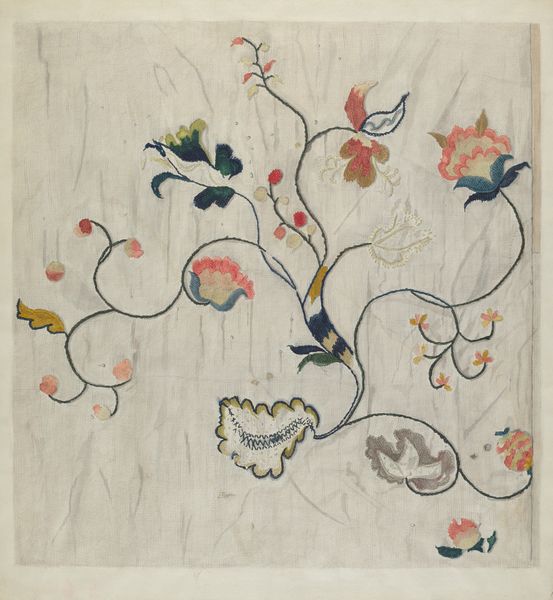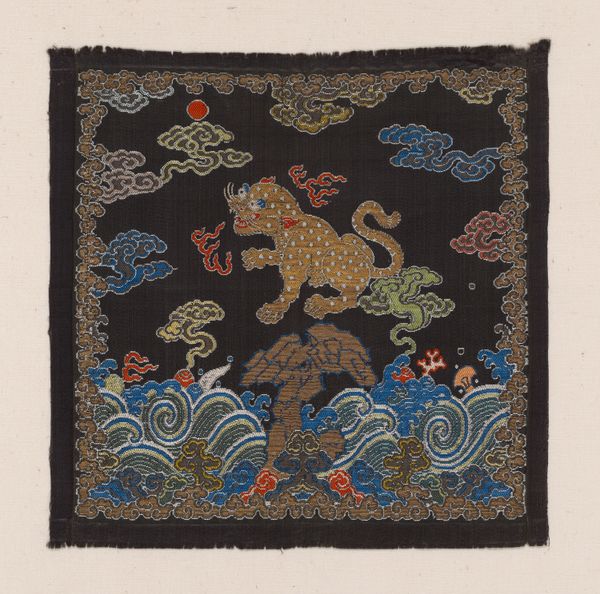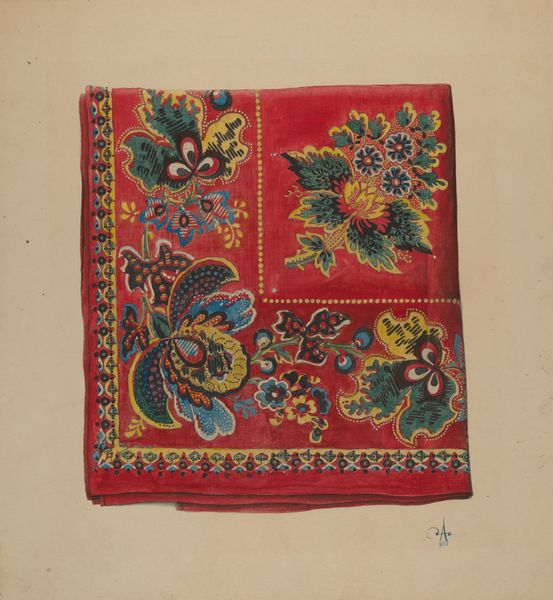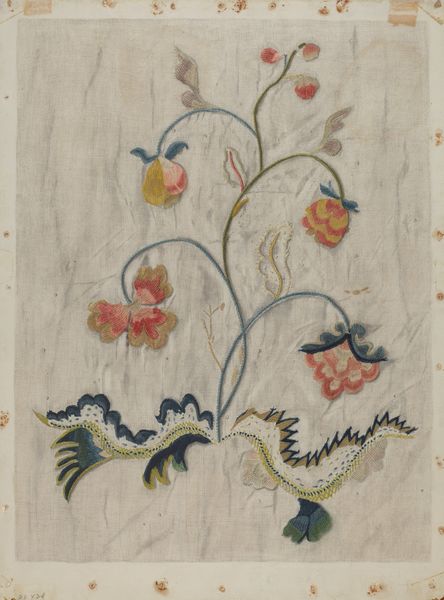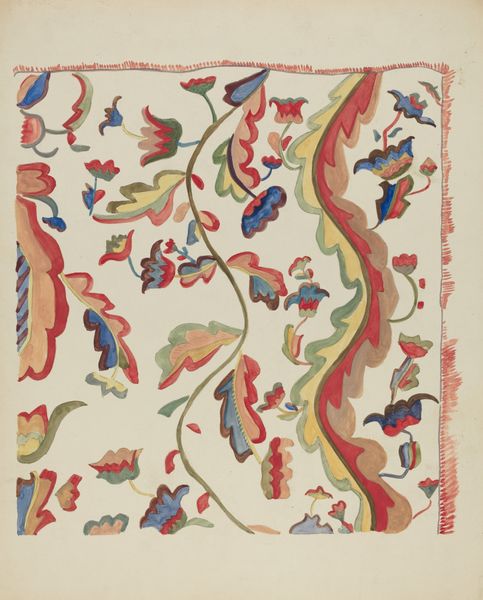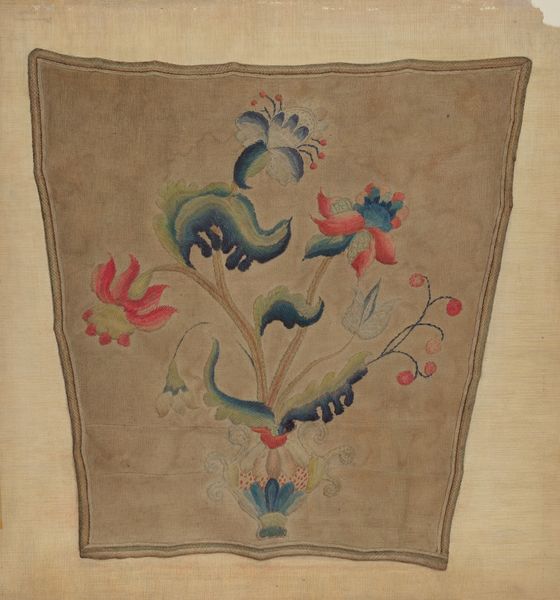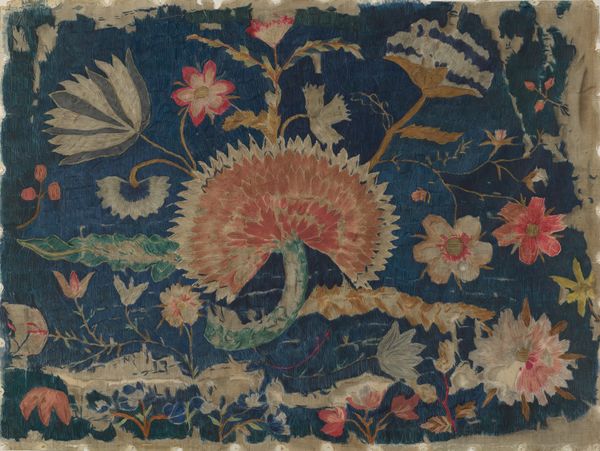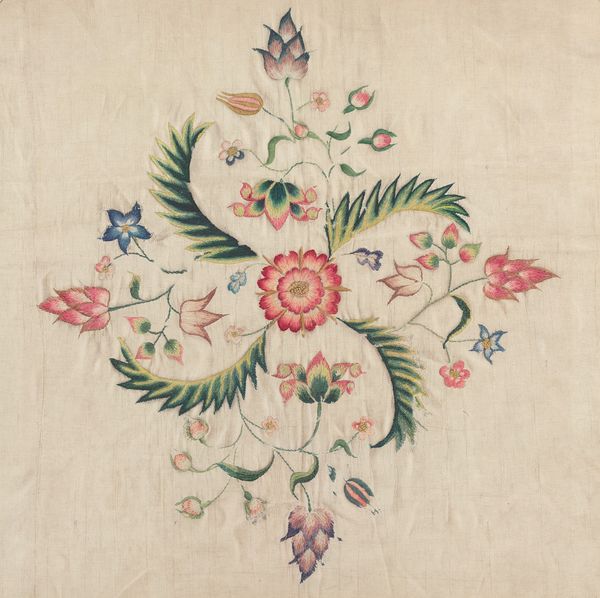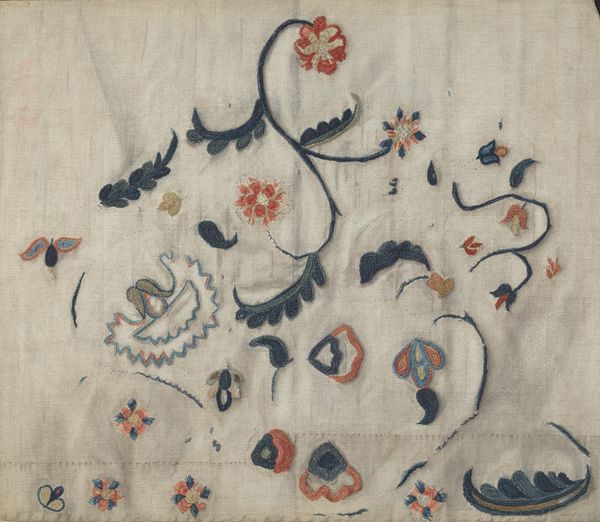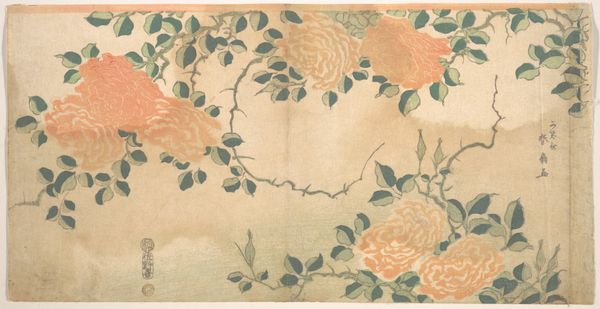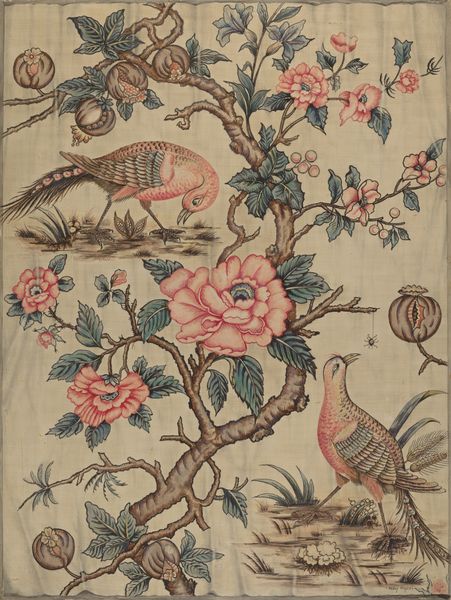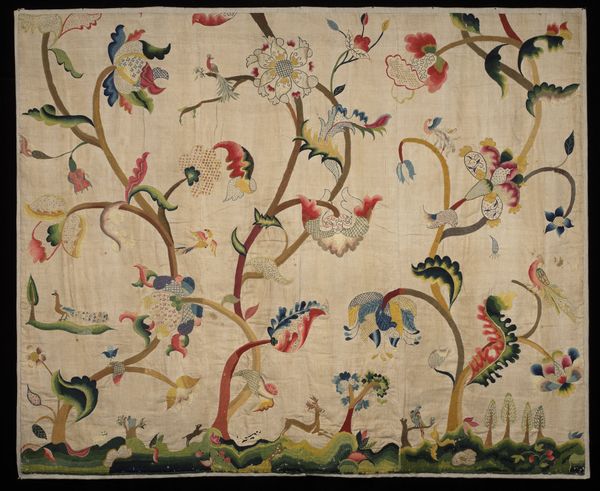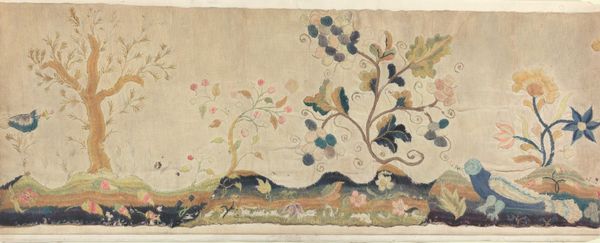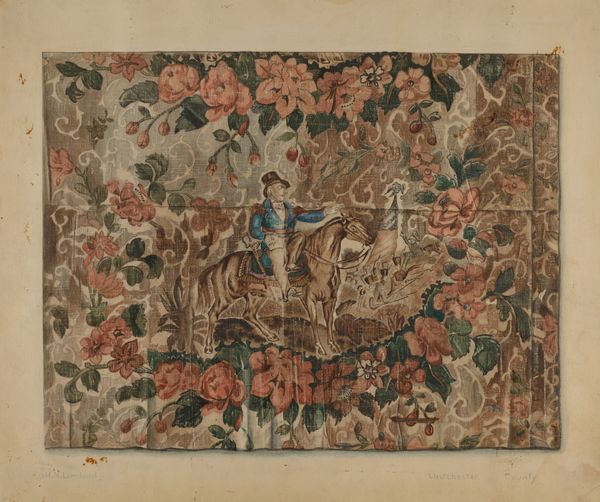
Wrapping cloth (uchikui) with circular floral design c. 19th century
0:00
0:00
textile
#
organic
#
asian-art
#
textile
#
ukiyo-e
#
japan
#
organic pattern
#
flower pattern
#
decorative-art
Dimensions: 55 × 56 1/4 in. (139.7 × 142.88 cm) (overall)
Copyright: Public Domain
Editor: Here we have a wrapping cloth, an uchikui, created around the 19th century in Japan. It is currently located at the Minneapolis Institute of Art. It has a circular floral design against a dark background. There's a subtle asymmetry to the entire composition that really grabs my attention. How would you interpret this work through a formalist lens? Curator: A compelling question. From a formalist viewpoint, we begin with its visual elements. Consider the textile medium itself – the texture, the weave. How does the dark background interact with the lighter floral motifs? The circular design, constructed of interconnected organic forms, creates a dynamic tension between symmetry and asymmetry, as you noted. Does the density of the pattern contribute to a sense of depth, or does it flatten the image? Editor: I hadn't really thought about the way it creates a sense of depth, but the more I look, the more I see it. Is the flatness by design to reinforce it being a textile with the intended purpose for everyday life? Curator: Precisely. Think about the relationship between the lines, colors, and shapes, apart from their symbolic meaning. How do they contribute to the overall aesthetic experience? Do the colours vibrate against the dark ground, creating optical stimulation, or does the colour harmony achieve a calm stasis? We might also explore how the material qualities—the texture of the cloth, the way it drapes and folds—affect our perception of the design. Editor: I see. By focusing on those intrinsic visual aspects and their interactions, we gain a different level of insight. It is interesting to consider something beyond what the item might represent on its surface. Curator: Exactly! And in doing so, we may indeed see an image more clearly by reducing external information, thus producing our own sense of engagement with the artist's vision.
Comments
minneapolisinstituteofart almost 2 years ago
⋮
Okinawan textiles sometimes incorporated design motifs from mainland Japan, a tradition that probably grew out of the maritime trade. Here, stylized depictions of pine, bamboo, and plum blossoms are arranged in a circle. Together they make a common motif in the arts of Japan, known as the “Three Friends of Winter” (shōchikubai), which symbolizes longevity, perseverance, and renewal. Both symbols of longevity, a crane and a tortoise decorate the center, thus suggesting that this uchikui was used to cover or wrap gifts for ceremonies such as weddings.
Join the conversation
Join millions of artists and users on Artera today and experience the ultimate creative platform.
